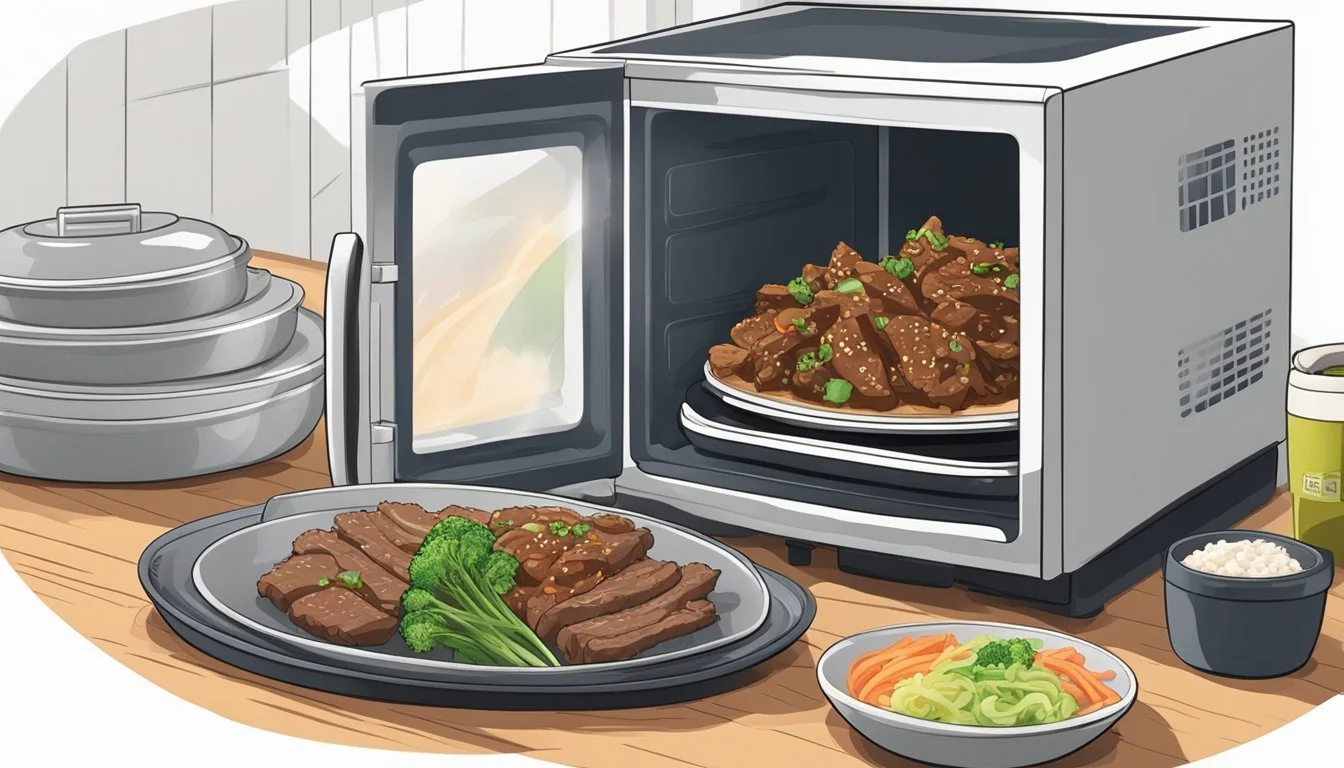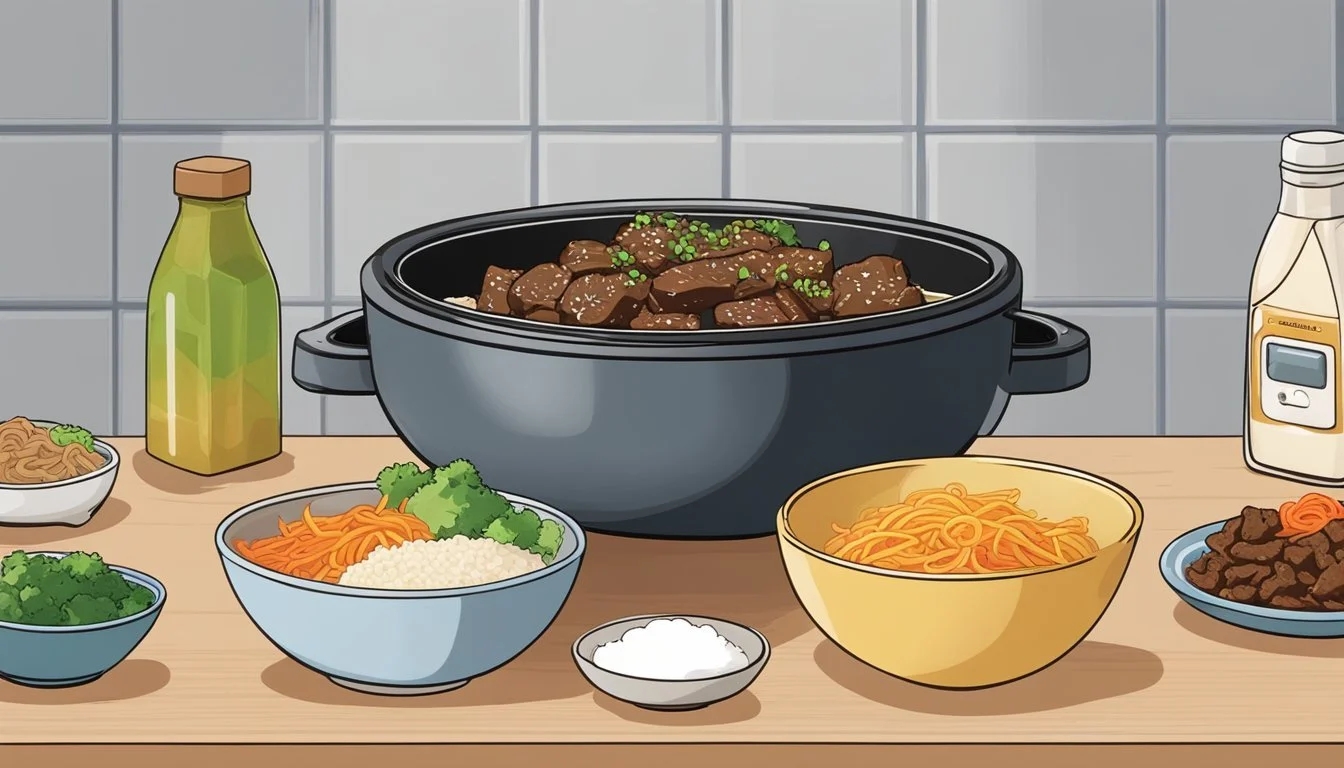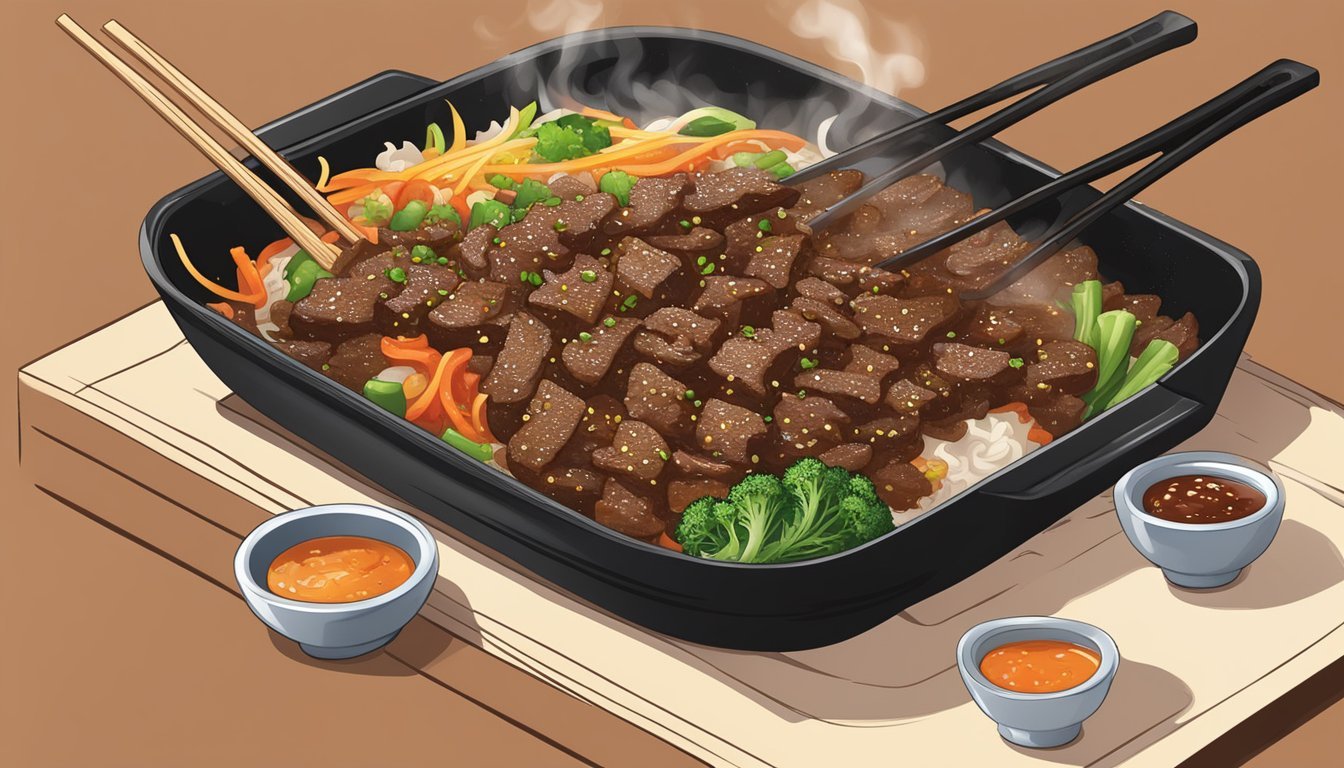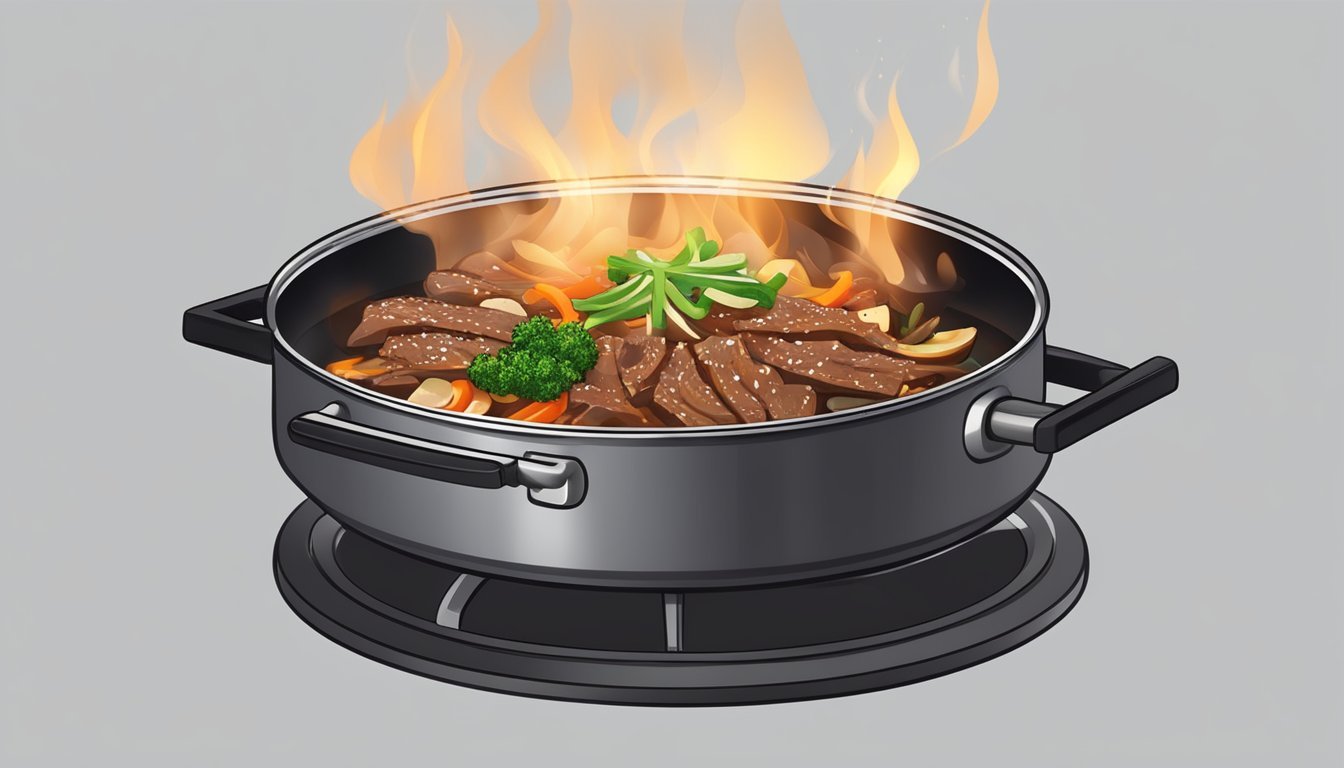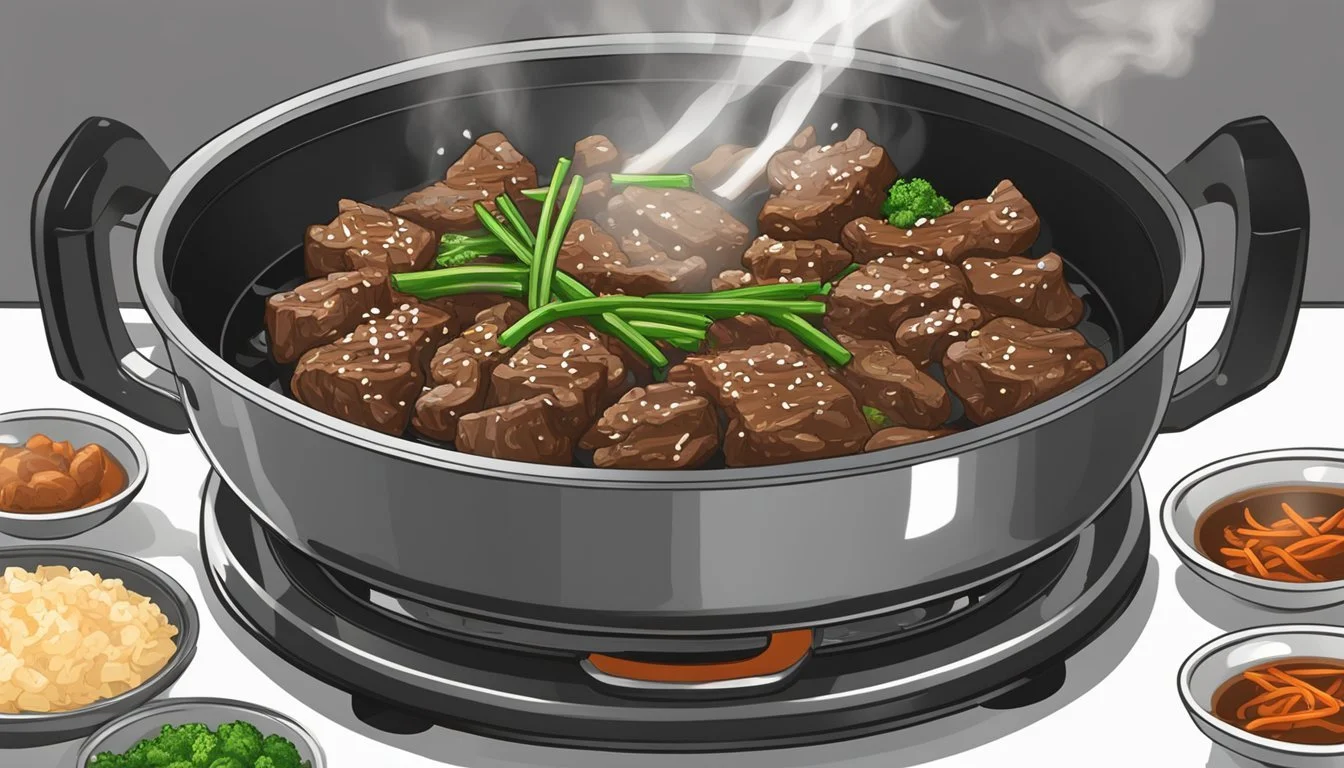Best Way to Reheat Korean Beef Bulgogi
Preserving Its Tenderness and Juiciness
Korean beef (What wine goes well with beef?) bulgogi is renowned for its tender slices of marinated meat that boast a savory and sweet flavor. Ensuring that reheated bulgogi retains its juicy texture is paramount for those looking to enjoy leftovers without losing the dish's original appeal. There are several methods to reheat this beloved Korean dish, each with its own pros and cons, and choosing the right one can make the difference between a just-okay meal and a deliciously revived bulgogi dish.
One popular method is microwaving, which is quick and straightforward. This approach requires careful attention to prevent the meat from becoming tough and dry. Covering the bulgogi with a damp paper towel and using brief intervals of heating followed by stirring can help maintain the meat’s moisture. Alternatively, using an oven can reheat the meat evenly and gently, thus reducing the risk of drying out. Wrapping the bulgogi in foil helps in trapping steam and keeping the meat moist throughout the reheating process.
For those who prefer the original grilled flavor, reheating bulgogi on a grill or grill pan is also an effective method. It allows the edges of the beef to caramelize slightly, adding to the complexity of the flavor while also warming the meat thoroughly. Regardless of the chosen method, it is essential to heat bulgogi to a safe internal temperature and preserve its signature tenderness and juiciness. Each reheating technique caters to different needs, whether one seeks convenience, flavor preservation, or texture maintenance.
Understanding Beef Bulgogi
Beef Bulgogi is a marinated meat dish that is central to Korean cuisine, characterized by its tender texture and a balance of sweet and savory flavors.
Origins and Popularity
Korean Beef Bulgogi, which translates to "fire meat," is a traditional Korean dish with a rich history that dates back to the Goguryeo era. It gained widespread popularity both in and outside of Korea for its unique taste and versatility in meals. Traditionally grilled over an open flame, Bulgogi has evolved in cooking methods while maintaining its status as a beloved dish worldwide.
Key Ingredients
The tenderness and juiciness of Beef Bulgogi are largely influenced by its key ingredients. Here is a breakdown of these essential components:
Beef: Thinly sliced, usually from sirloin or rib eye.
Sugar: Adds a touch of sweetness to the marinade.
Soy Sauce: Provides the savory foundation of the marinade.
Garlic: A staple in Korean cooking, it imparts a pungent flavor.
Sesame Oil: Contributes a nutty taste and helps tenderize the meat.
Pear: An Asian pear, is often utilized for its natural enzymes that tenderize the beef.
Onion: Sliced yellow onion adds sweetness and texture to the dish.
Sesame Seeds: Often used as a garnish, they add a slight crunch and nutty flavor.
These ingredients are blended into a marinade, in which the beef is soaked to absorb the flavors before being cooked to perfection.
Storage and Preservation
When it comes to preserving the quality of Korean beef bulgogi leftovers, the key is to store them properly in the fridge or freezer. Proper storage maintains the flavors and textures that make the dish a favorite.
Best Practices for Storing Leftovers
To ensure the best quality, leftovers should be stored in an airtight container and placed in the refrigerator as soon as they have cooled down to room temperature. They can expect optimal freshness when consumed within two to three days. Using plastic wrap can further seal the dish from exposure to air. If choosing to cover the bulgogi with foil before placing it in a container, one must ensure it's wrapped tightly to prevent drying out.
Freezing and Thawing Guidelines
If they're planning to keep the beef bulgogi beyond a few days, freezing is an option. They should:
Cool the bulgogi completely to avoid bacterial growth.
Portion the bulgogi into meal-sized servings—this helps with easy thawing and reduces waste.
Use heavy-duty freezer bags or airtight containers to prevent freezer burn.
When ready to eat, thaw the bulgogi in the refrigerator overnight. One should never thaw it at room temperature.
By following these guidelines, the bulgogi's taste and texture will be well-preserved until they are ready to reheat and enjoy it again.
Preparation Before Reheating
Proper preparation of beef bulgogi before reheating is essential to maintaining its tender and juicy texture. These preparatory steps ensure that the meat does not dry out and the flavors remain intact during the reheating process.
Bringing to Room Temperature
It is advisable to remove the beef bulgogi from the refrigerator and let it sit at room temperature for about 15-30 minutes before reheating. This step reduces the temperature gradient between the cold meat and the heating environment, allowing for more even warming.
Adding Moisture
Bulgogi is marinated in a mixture rich in soy sauce and other ingredients, which contribute to its overall moisture and flavor. To replicate these conditions during reheating and prevent the beef from drying out, one should add a small amount of water to the dish. Here's how to ensure added moisture:
Microwave: Add a tablespoon of water per serving into the container.
Oven: Sprinkle water lightly over the meat before covering the dish with foil.
Ensuring the presence of moisture will help to keep the bulgogi tender and enhance its flavor, mimicking the juicy texture of freshly cooked meat.
Reheating Techniques
To maintain the tenderness and juiciness of Korean beef bulgogi, it's essential to use the appropriate reheating method. The following techniques help ensure that the delicate flavors are preserved and the meat does not become tough or dry.
Microwave Method
When using a microwave, place beef bulgogi in a microwave-safe dish, adding a splash of water to prevent drying out. Cover the dish with a damp paper towel to retain moisture. Heat on high for 1-2 minutes, stir, and heat for another 30-60 seconds if required.
Oven Method
For the oven method, preheat it to 350 degrees Fahrenheit (177 degrees Celsius). Transfer the bulgogi to a baking dish and cover with aluminum foil to lock in moisture. Reheat for about 15-20 minutes; use a thermometer to check that the meat has reached a safe temperature.
Stovetop Method
A hot skillet on the stovetop can reheat bulgogi effectively. For best results, use a cast iron or non-stick skillet. Warm the skillet over medium heat and add the bulgogi, stirring occasionally until it is heated through.
Grill Method
Preheating a grill to medium heat is another way to warm up bulgogi. One can either place the meat on a grill pan or wrap it in foil. Grill for about 5-7 minutes per side, monitoring to ensure it doesn't overcook.
Air Fryer Method
To reheat bulgogi in an air fryer, set the device to 350 degrees Fahrenheit (177 degrees Celsius). Place the beef in the air fryer basket, ensuring it's in one layer for even heating. Reheat for about 3-4 minutes, shaking the basket halfway through.
Achieving the Ideal Texture and Flavor
When reheating beef bulgogi, retaining its tender texture and the complex interplay of savory, sweet, and smoky flavors is critical. It's important to apply both the right amount of heat and time.
Controlling the Heat
Heat application must be carefully managed to maintain the beef's succulence. The microwave can be used for reheating, but high heat should be avoided as it can quickly dry out the meat. Instead, low to medium heat should be employed to warm the meat thoroughly without losing its juices. In an oven setting, 350 degrees Fahrenheit is recommended to uniformly reheat the bulgogi, with the dish covered using aluminum foil to keep in moisture.
Timing is Key
For best results in a microwave, a short blast of 1-2 minutes is advisable, checking halfway through to stir the meat and ensure even heating. Additional intervals of 30-60 seconds can be added until the desired temperature is reached. In the oven, bulgogi reheating for 15-20 minutes is generally sufficient. Importantly, one should use a meat thermometer to confirm a safe internal temperature has been achieved. Careful timing ensures that the savory marinade infiltrates the meat effectively, enhancing flavors without causing the texture to become tough. A proper reheating technique allows for a desirable char on the meat while preserving the bulgogi's signature tenderness.
By paying attention to these details, the sauce is given a chance to reabsorb into the meat, bolstering the savory and sweet flavor profile.
Serving Suggestions
When serving reheated Korean beef bulgogi, a harmonious balance between the main dish and sides must be achieved to enhance the overall dining experience. The choice of side dishes and pairings plays a critical role in complementing the flavors while respecting the dish's cultural heritage.
Suitable Side Dishes
Rice and Vegetables:
Steamed white rice: A classic base that absorbs the bulgogi's rich flavors.
Sautéed vegetables: A variety of vegetables such as bell peppers, onions, and carrots sautéed lightly pairs well with bulgogi's savory taste.
Lettuce Wraps and Pickled Vegetables:
Lettuce wrap: Tender bulgogi tucked into crisp lettuce leaves, often with a spoonful of steamed rice, creates a fresh, hand-held delight.
Pickled vegetables: Offering tang and crunch, pickled vegetables like kimchi or pickled radish cleanse the palate and offer a vibrant contrast.
Complementary Pairings
Kimchi and Ssamjang:
Kimchi: This staple Korean side dish of fermented cabbage with a complex, spicy profile complements the marinated beef beautifully.
Ssamjang: A thick, spicy paste made from soybean and chili, used as a flavorful condiment for lettuce wraps.
Perilla Leaves:
Perilla leaves: Their minty and slightly anise-like flavor provides a unique taste sensation when used as a wrap along with rice and bulgogi.
Common Mistakes to Avoid
When reheating beef bulgogi, ensuring the meat remains tender and juicy is paramount. Avoiding overcooking and improper storage is crucial to prevent the bulgogi from becoming dry or unpleasantly textured.
Overcooking the Beef
One should always be vigilant not to overheat their beef bulgogi. The optimal reheating method should bring the meat to a temperature just enough to make it piping hot, without extending the cooking process. Overcooking the beef can lead to a chewy and tough texture, stripping away the tenderness that bulgogi is famous for. Here is a simple guide to avoid overcooking:
Microwave: Reheat in short intervals, checking the texture periodically.
Oven: Heat at a low temperature, around 350 degrees Fahrenheit, and remove as soon as it's evenly warm.
Improper Storage
Proper storage can affect not just the safety of the bulgogi but also its quality when reheated. Beef bulgogi should be stored in an airtight container to prevent it from drying out. Additionally, the container should be shallow enough to allow the meat to cool quickly and refrigerated promptly. Rapid cooling prevents bacterial growth and preserves the meat's quality. Here's a brief reminder on proper storage practices:
Temperature: Refrigerate within 2 hours of cooking to maintain safety and quality.
Airtight containers: Use them to prevent beef from drying out and to keep it juicy.
Alternative Uses for Leftover Bulgogi
Leftover bulgogi delivers an excellent opportunity for culinary creativity, allowing cooks to transform this Korean delicacy into different flavorful dishes. The tender and savory flavors of bulgogi pair well with various ingredients, offering a chance to experiment with different cuisines.
Creative Recipes
Tacos: One can repurpose bulgogi as a filling in tacos for an exciting Korean-Mexican fusion. Laying bulgogi in a soft tortilla paired with a spicy kimchi slaw creates a delectable contrast of flavors and textures.
Ingredients: Bulgogi, soft tortillas, kimchi, vegetables, hot sauce
Steps:
Warm tortillas in a pan.
Top with bulgogi and garnishments.
Fried Rice: Transforming leftover bulgogi into a fried rice dish is both practical and delectable. The beef adds a rich depth to the fried rice, making it a satisfying main course.
Ingredients: Bulgogi, cooked rice, vegetables, soy sauce, sesame oil
Steps:
Sauté vegetables in a large skillet.
Add bulgogi and rice, then season to taste.
Salad: Incorporating bulgogi into a salad brings a protein-packed punch to a light and healthy meal. A simple dressing can augment the bulgogi’s flavors without overpowering it.
Ingredients: Bulgogi, mixed greens, dressing
Steps:
Toss mixed greens with dressing.
Top with warmed bulgogi.
Fusion Cuisine Ideas
Noodles: Bulgogi can be added to a variety of noodle dishes, pairing seamlessly with both Asian style noodles such as soba or udon and Italian pastas like fettuccine.
Ingredients: Bulgogi, noodles, sauce
Steps:
Cook noodles according to package instructions.
Combine with bulgogi and preferred sauce.
Pizza: For an innovative twist, one can top a pizza with thinly sliced bulgogi, adding a unique Korean flavor to an Italian staple.
Ingredients: Bulgogi, pizza dough, cheese, vegetables
Steps:
Roll out dough and spread with a sauce base.
Sprinkle with cheese, bulgogi, and vegetables, then bake.
Nutritional Information and Dietary Considerations
Korean beef bulgogi is not only celebrated for its savory flavor and umami but also offers a range of nutrients. The following sections discuss the health benefits and how to adapt the dish for various dietary restrictions.
Health Benefits
Beef bulgogi contains proteins, which are essential for muscle repair and growth. It also provides a good amount of iron, necessary for transporting oxygen in the blood. The dish, with its rich vegetable content, contributes vitamins and minerals when served with sides like kimchi or salads. Its signature umami comes from ingredients like soy sauce and sesame oil, which contain amino acids that the body requires for various metabolic processes.
Adapting for Dietary Restrictions
For individuals with dietary restrictions, bulgogi can be modified to suit their needs.
For a low-sodium diet, reduced-sodium soy sauce is a suitable substitute.
Gluten-free diners may opt for tamari instead of traditional soy sauce.
To accommodate a low-sugar diet, the amount of sugar in the marinade can be lessened, or sugar substitutes could be considered.
For those observing a vegetarian or vegan diet, plant-based protein like tofu or seitan can replace beef while still offering a high-protein meal that retains the savory umami flavor.
By being mindful of ingredients, beef bulgogi can be a versatile dish that aligns with various nutritional needs and preferences.


